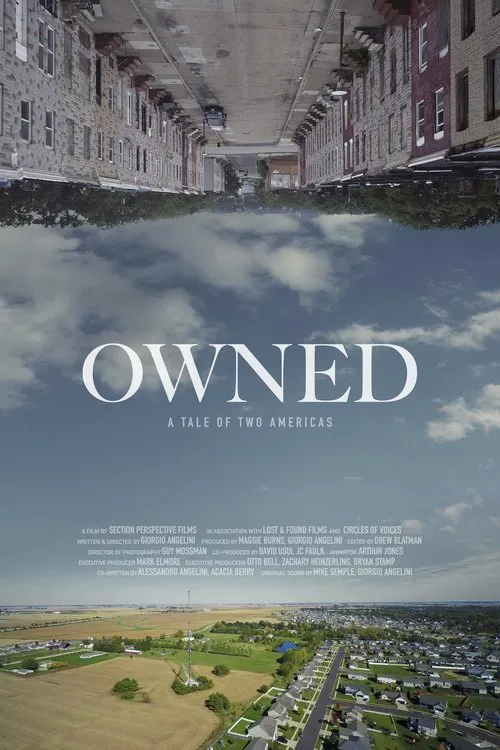Owned: A Tale of Two Americas

Plot
Owned: A Tale of Two Americas is a documentary film that delves into the lesser-known aspects of the United States' housing economy. The film takes the audience on a visceral journey through the dark history behind the system, exposing the deeply entwined threads of racism and commoditization that have shaped the country's economic landscape. By chronicling the evolution of housing policies and their devastating consequences, the documentary weaves a comprehensive narrative that challenges the viewer to reevaluate their understanding of the American Dream. The film commences by traversing the early 20th century, where it explores the overtly racist foundations of the housing economy. During the 1930s, the US government introduced the Federal Housing Administration (FHA), a program designed to provide mortgage insurance to aspiring homeowners. However, this initiative inadvertently perpetuated segregation by issuing insurance to predominantly white neighborhoods, while systematically denying such opportunities to predominantly black and Hispanic communities. By doing so, the FHA solidified the notion of white homeownership as the ultimate symbol of success, while effectively disenfranchising minority populations. The documentary then shifts its focus to the post-World War II era, where it illustrates the rapid growth of suburbanization and the concomitant rise of suburban sprawl. As the US economy boomed, middle-class Americans sought to escape urban congestion and enjoy the amenities of suburban life. However, this mass migration to the suburbs came at a steep cost, particularly for African Americans. With the construction of the Interstate Highway Act, cities were systematically dismantled to make way for highways, leaving many African American communities fragmented and disconnected from vital resources. The film vividly portrays the devastating impact of this policy, showing how urban renewal and highway construction contributed to the displacement of thousands of African American residents from their homes. The second half of the documentary concentrates on the unbridled commoditization of housing in the US, tracing the events leading up to the 2008 housing market collapse. As Wall Street investors became increasingly fascinated with the housing market, they began creating complex financial instruments to package and sell mortgage-backed securities. These securitized loans enabled investors to profit from the housing market without assuming ownership risks, further exacerbating speculation and reckless behavior. The documentary effectively illustrates the toxic dynamic that existed between financial institutions, regulatory bodies, and homeowners themselves, which ultimately led to the housing bubble's catastrophic burst. Through a combination of archival footage, interviews with experts, and firsthand accounts from individuals directly affected by housing policies, Owned: A Tale of Two Americas constructs a nuanced narrative that illuminates the deep-rooted historical context behind the housing crisis. By examining the complex interplay between racism, economic inequality, and unbridled consumerism, the documentary sheds light on a system that has enabled white privilege and exacerbated poverty among minorities. One of the most striking aspects of the film is its ability to humanize the individuals affected by these policies. From families forced to relocate due to urban renewal projects to homeowners who saw their life savings eroded by predatory lending practices, the documentary presents a powerful counter-narrative to the dominant mythology of the American Dream. The stories shared by these individuals are both heart-wrenching and infuriating, serving as a stark reminder that the economic disparities faced by marginalized communities are the direct result of systemic inequalities. Ultimately, Owned: A Tale of Two Americas paints a sobering picture of a nation grappling with its own foundational contradictions. As the film so eloquently articulates, the US housing economy is a product of both historical legacy and ongoing systemic injustices. By exposing the dark underbelly of this supposedly egalitarian society, the documentary challenges viewers to reexamine their understanding of the American Dream and to acknowledge the enduring impact of racism on the US economic landscape.
Reviews
Recommendations




